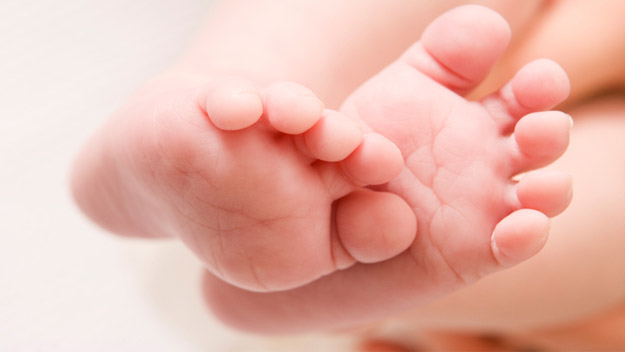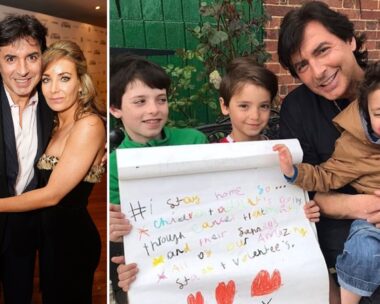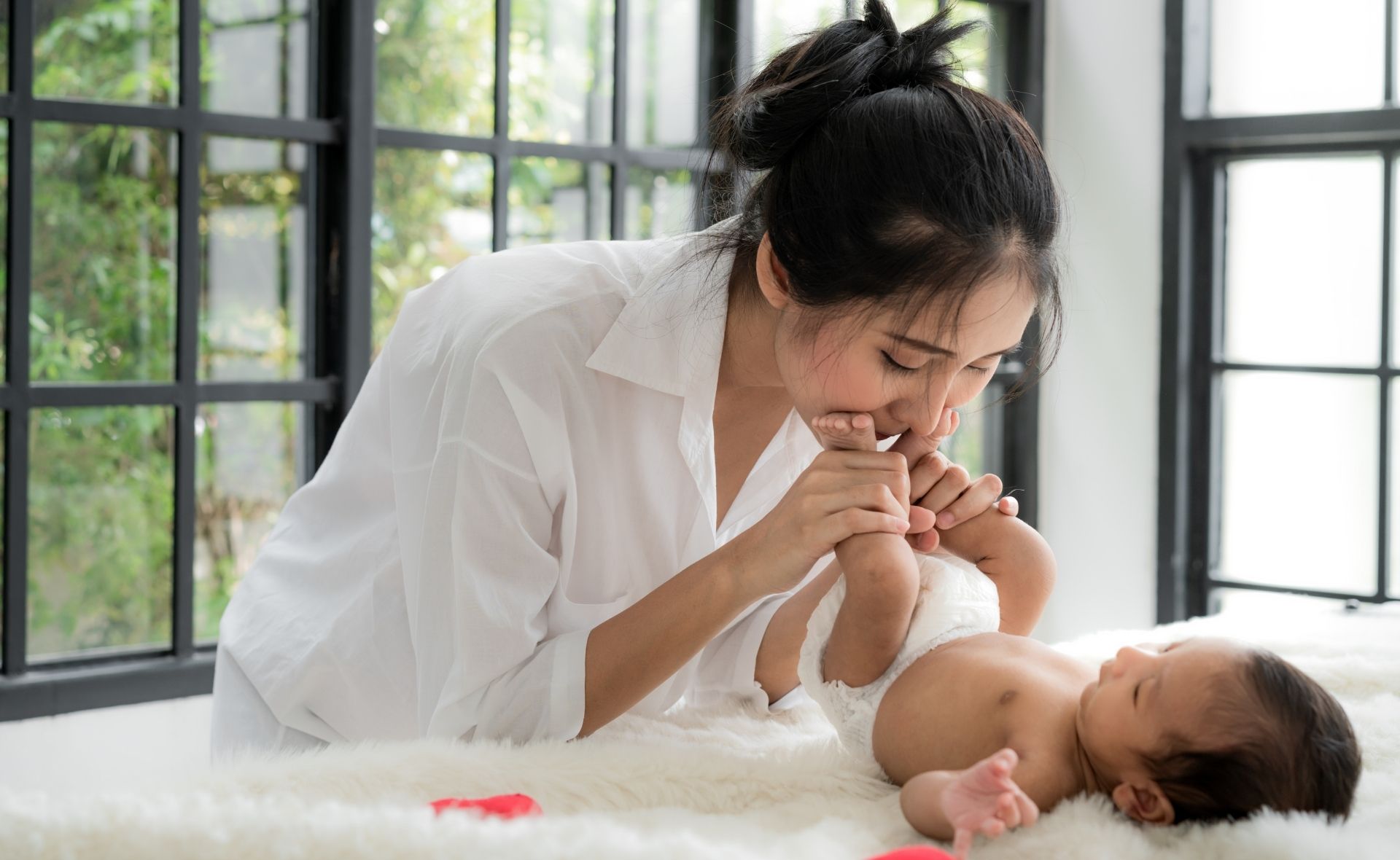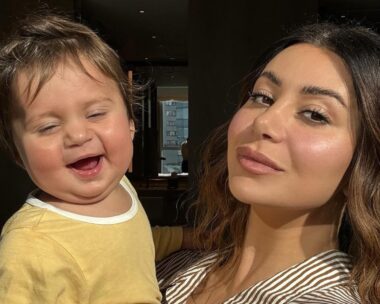Your baby’s feet are made for walking, kissing and tickling. Here’s how to keep them healthy and strong so they’ll carry her in comfort for the rest of her life.
Babies are born with irresistible feet — tiny, straight toes, smooth, lovely skin – and they even smell sweet. Most mums instinctively count their newborn’s toes during their first cuddle after the birth, but don’t be deceived by their cute squidginess — beneath the skin’s surface is one of the most complex structures in the body.
Your newborn’s feet are soft and pliable, because they’re made mainly of fatty tissue (muscles, ligaments and tendons) and soft cartilage, which changes into bone as her feet grow.
Incredibly, although your baby won’t be walking for many months, her body is already programmed to perform this skill. If you hold her under her arms and ‘stand’ her gently on a firm surface, she’ll move her legs as if walking. This stepping reflex is present at birth, then disappears within six weeks.
Once this reflex has disappeared, it’s best to resist the urge to stand your baby upright until her back’s strong enough to support her – from around six months. As a general rule, once she can crawl, it’s fine to ‘stand’ her on your lap, as long as you’re taking her weight.
How they grow
All babies have flat feet. The spring-like arch — designed to absorb impact and spread your toddler’s weight when she walks and runs — usually emerges gradually as the bones develop. That’s why most new walkers tend to ‘plod’, moving each leg as a whole without flexing the knee or ankle.
Flat feet
Many children’s feet remain flat until the age of three or four. This doesn’t generally cause any problems and the arch usually develops before the child starts school, but if you’re concerned, mention it to your GP. Treatment isn’t usually necessary but, if need be, special insoles can be inserted into your child’s shoes to change the angle of the foot and encourage the arch to develop.
Overweight toddlers are particularly prone to flat feet because their feet have more fatty tissue and the extra weight they’re carrying squashes their feet, making them look even flatter than they are.
Some babies find walking uncomfortable because of muscular problems. “Aches and pains can be part of normal growth and development, but if they are severe or long-term, seek advice from your GP,” says podiatrist (foot specialist) Anne Stephens.
On the right foot
It’s important to check your baby’s feet regularly and see your GP if you notice anything that concerns you, as good foot care during babyhood can reduce the risk of problems, such as poor posture and leg or back pain, in later life. Don’t assume that just because your baby or toddler isn’t making a fuss about her feet, everything’s okay. The layer of puppy fat they are covered in means she won’t feel pain if they are being squashed or bent out of shape by ill-fitting shoes.
Best foot forward
Most babies have perfect feet, but occasionally there are problems, such as talipes, or club foot. This condition is present at birth and involves the foot pointing downwards and inwards. In the majority of cases, talipes is caused by the foot being squashed in the womb, and is easily corrected by physiotherapy.
Another common problem, usually only discovered once the baby is walking, is pigeon toes (walking with the toes pointing inwards) or pointing the toes outwards. This is part of the natural development process and usually corrects itself by school age, but see your GP if you’re concerned.
Miniature pedicure
Bath time is a good opportunity to give your baby’s feet a little TLC. After washing well, dry them carefully to prevent chapping, and check her toenails, which will be soft, long and may curl around at the end. “Don’t worry if they’re brittle or oddly shaped,” says Anne Stephens. “Just keep cutting them straight across and they should revert to normal.”
Babies’ toenails look so tiny and delicate, it’s natural to feel nervous about trimming them, but there’s no need to worry. Give her a bath first as this makes the nails softer and easier to cut, then trim them straight across using baby nail clippers.
First steps
Your baby’s feet will grow rapidly, reaching almost half their adult foot size before her first birthday. It’s tempting to dash out and buy those sweet little shoes you’ve had your eye on as soon as your baby takes her first tottering steps. But the longer you let her stay barefoot, the better, as it will help her feet grow normally and enable the muscles to strengthen.
“Your baby’s feet are so malleable, they’re vulnerable to damage from ill-fitting shoes, so it’s vital to have them measured by a trained fitter,” says Bob Hardy, foot-fitting manager for Clarks. “The cartilage in your baby’s feet is a bit like jelly — once you put it into a mould, it will take on the shape of the mould, so if her shoes don’t fit properly, they could cause permanent damage to her feet.”
During the first few months, you can keep her feet cosy and warm in socks, or once she’s able to crawl, in some soft leather bootees, or ‘padders’.
Do they fit?
Wearing ill-fitting shoes can give your baby blisters and could even distort her growing feet. The best children’s shoe shops offer footwear in different widths as well as half sizes, and have trained fitters who will measure the width of your baby’s feet as well as their length.
Your baby’s first shoes should have soft leather uppers to keep her feet cool and comfortable, a lightweight, flexible sole and padded ankle. They need to be supportive yet flexible — you should be able to bend them in half.
Never let your baby wear second-hand shoes, because they will have moulded to the shape of their original owner’s foot and won’t ever fit your baby properly. In fact, they could even harm her feet.
Babies’ feet can grow very fast, so get them checked every six to eight weeks to make sure her shoes don’t get too tight if she has a growth spurt. A trained shoe fitter will ensure there’s at least 1.4cm of room in front of her toes to allow for growth.
Your toddler’s shoes should support her feet well and be made from a breathable material, such as leather, inside and out. Trainers are fine, as long as they come in a good range of widths as well as lengths. Don’t be swayed by designer labels — it’s far more important to opt for a children’s range that’s been developed to accommodate all shapes and sizes of feet.
Shoes for all seasons
Once puddle-splashing season arrives, your toddler will need gum-boots, and it’s best to buy these from a shoe shop with a trained fitter. If you’ll want her to wear them with extra-thick socks as the weather gets colder, remember to take these along for her to wear when she tries them on. If you buy her slippers, the fit will also need to be checked.
Sock shop
There’s little point getting off on the right foot when it comes to footwear if you then squash your baby’s tootsies into socks or tights that are too small. Socks should be seamless (to reduce the risk of rubbing), made of natural fibres such as cotton and fit well. Too baggy and they’ll bunch up, causing corns and blisters; too tight and they could squash her feet into an unnatural shape. The same goes for babygros — make sure there’s plenty of room for her feet to move and grow.




